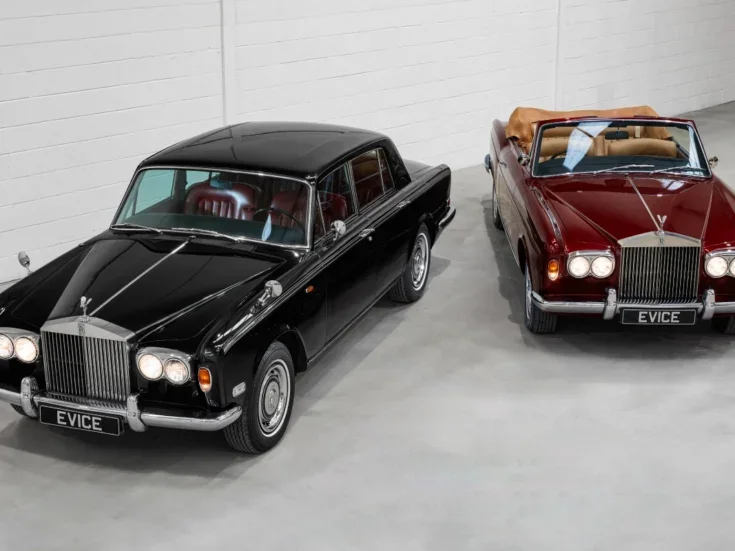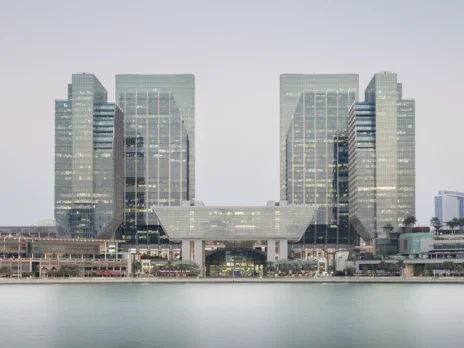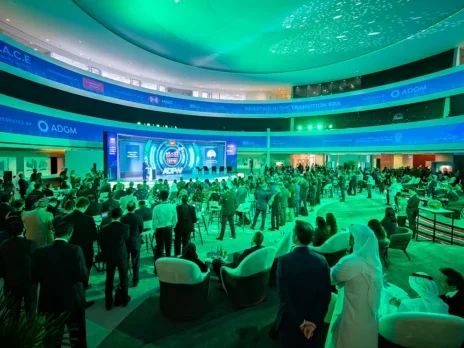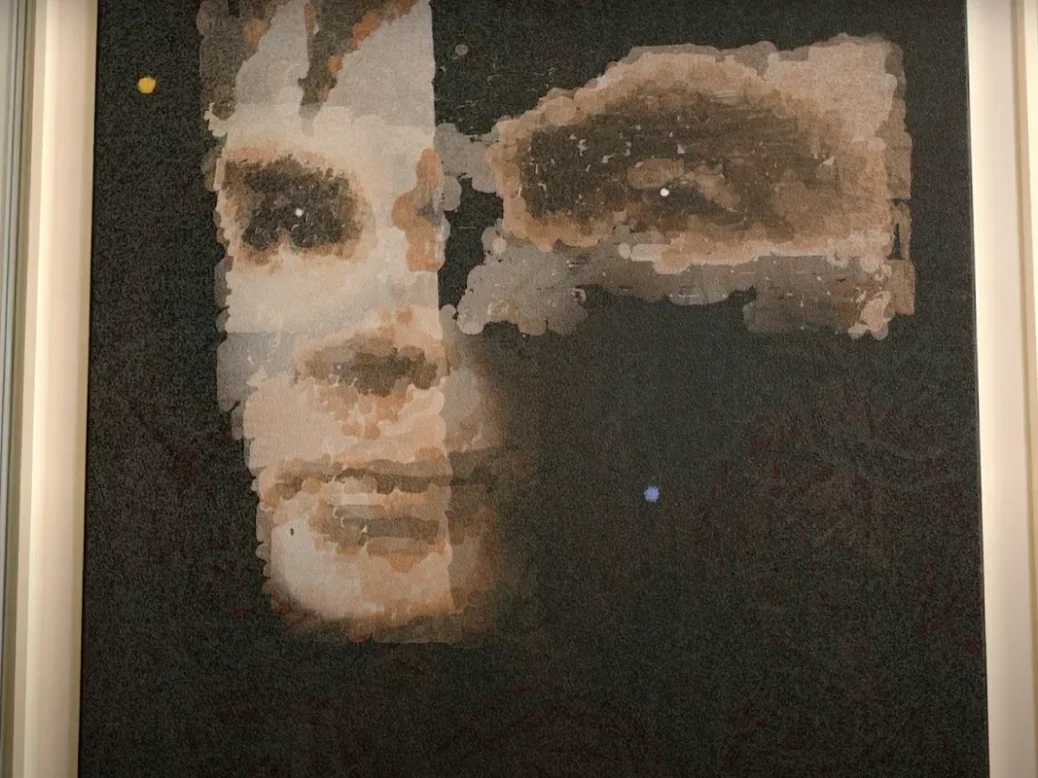
A robot walks into Sotheby’s, paints a picture, and walks out with over a million dollars. No, that’s not the setup for a bad joke — it’s the reality of Ai-Da, the world’s first humanoid robot artist. Her painting, A.I. God. Portrait of Alan Turing, just sold for five times its estimate in a spectacle that feels less like a watershed moment for art and more like the sequel to a very familiar cautionary tale.
Remember the NFT era? Remember the promises of revolution, democratisation, and seismic shifts in value? And do you remember what we actually got? Pixelated monkeys, speculative bubbles, and a collective hangover that still lingers.
Well, congratulations, art world. It seems we’ve decided to do it all over again.
[See also: Why AI will eat itself]
But let’s not lose ourselves in hyperbole. Let’s pull this apart and see it for what it really is: not innovation, not the dawn of a brave new artistic era, but a gimmick. A headline-chasing, headline-making gimmick. And frankly, it’s beneath us.
Should we be celebrating artwork by a robot?
Ai-Da Robot, a humanoid creation of Oxford gallerist Aidan Meller, is being heralded as a trailblazer for robotic art. She’s got cameras for eyes, a robotic arm for a paintbrush, and algorithms that allow her to paint, draw, and sketch. She’s been the darling of United Nations summits, academic panels, and Sotheby’s, where her painting set a record as the most valuable artwork ever sold by a robot, going for $1.1 million. The buzz is deafening, the headlines are glowing, and the bids were staggering. But amid all the noise, the question nobody seemed to be asking is: what are we celebrating?

Is Ai-Da an artistic genius? Of course not. She’s a robot. She doesn’t feel, she doesn’t think, she doesn’t create – she executes. The work she produces isn’t born of imagination or emotion—it’s the result of programming, algorithms and a clever marketing strategy that has convinced people to value the process over the product.
And here’s the kicker: it’s not about the art. It was never about the art. It’s about the spectacle. It’s about the novelty of a robot with a paintbrush and the willingness of auction houses to slap six-figure price tags on whatever gets people talking. The art world isn’t pushing boundaries here; it’s selling them out.
[See also: Why HNWs are right to be worried about the threat of deepfakes]
If this all feels eerily familiar, that’s because we’ve seen this movie before. It wasn’t so long ago that NFTs promised to upend the art world. Blockchain technology was going to democratise ownership, empower artists, and redefine value. What we got instead were speculative bubbles, JPEGs of apes selling for millions and a market that collapsed under the weight of its own absurdity. The lesson was clear: hype without substance is a house of cards waiting to fall.
Yet, here we are again, falling for the same trick in a different outfit. Ai-Da isn’t the next step in the evolution of art; she’s the next step in the art world’s ongoing infatuation with novelty for novelty’s sake. The only difference is that this time, the gimmick isn’t a blockchain, it’s a robot.
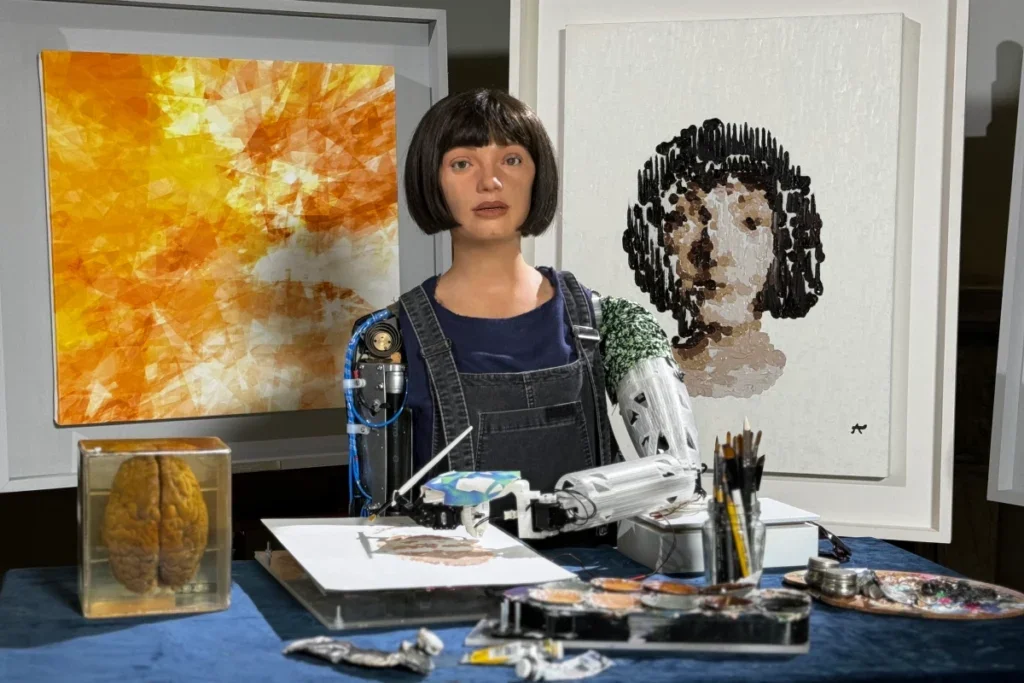
Art is to be human
Let’s remind ourselves of what art is supposed to be.
Art is connection.
It’s humanity distilled into form. It’s joy, pain, curiosity, and imagination woven into something that challenges, moves and inspires.
It is, by its very definition, something that comes from the soul – a concept that Ai-Da, by her own admission, cannot begin to comprehend. ‘I do not have subjective experiences,’ she once told members of the House of Lords. ‘Although I’m not alive, I can still create art.’
But can she, really? Or is this just a clever engineering project wrapped in a lot of PR spin?
When we applaud Ai-Da’s work, we’re not celebrating art; we’re celebrating technology.
[See also: Why HNWs must act now to fight the rise of disinformation]
And there’s a place for that.
There’s a place for marvelling at the ingenuity of the human mind and its ability to program a machine to do extraordinary things. But let’s not confuse that with creativity.
Let’s not confuse engineering with artistry.
And let’s not cheapen the very essence of art by pretending they’re the same thing.

Eroding art
Auction houses thrive on spectacle, and there’s no denying that Ai-Da is a spectacle, but this isn’t a moment that will redefine art; it’s a moment that will sell a lot of tickets to the show.
The question we should be asking isn’t whether Ai-Da can make a painting – of course, she can. The question is, why are we so eager to celebrate it? What does it say about us that we’re willing to redefine art as anything with a novelty factor and a viral headline? Are we so desperate for the next big thing that we’ve forgotten what art is supposed to be?
The art world doesn’t need another gimmick. It doesn’t need another viral moment, another headline-grabber, or another million-dollar sale that’s more about marketing than meaning. What it needs is a reckoning. It needs to remember that art isn’t about the medium, it’s about the message. It isn’t about the spectacle, it’s about the soul.
We don’t need to chase the next big thing. We need to hold on to what makes art real, what makes it matter. Because if we keep falling for these tricks, we’re not evolving art.
We’re eroding it.
John Russo is the CEO of Maddox Gallery



